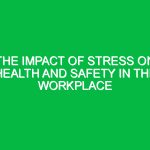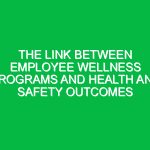Emergencies can strike at any time, and having a well-thought-out emergency response plan in place is crucial for ensuring the safety of employees and minimizing potential risks. In this article, we will discuss the best practices for creating an effective emergency response plan in the workplace.
Assessing Potential Risks
Before creating an emergency response plan, it is essential to assess the potential risks that your workplace may face. This could include natural disasters, fires, chemical spills, or medical emergencies. By identifying these risks, you can tailor your emergency response plan to address specific scenarios.
Conducting a Hazard Assessment
One of the first steps in assessing potential risks is to conduct a hazard assessment of your workplace. This involves identifying any potential hazards that could cause harm to employees or property. By understanding these hazards, you can develop strategies to mitigate risks and respond effectively in an emergency situation.
Creating a Risk Matrix
Once you have identified potential hazards, it is helpful to create a risk matrix that categorizes risks based on their likelihood and severity. This can help prioritize which risks to focus on and allocate resources accordingly.
Developing an Emergency Response Team
Having a dedicated emergency response team in place is essential for executing your emergency response plan effectively. This team should be trained in emergency procedures and be responsible for coordinating response efforts in the event of an emergency.
Training and Drills
Regular training sessions and emergency drills are crucial for ensuring that your emergency response team is prepared to handle various scenarios. By practicing different emergency scenarios, team members can familiarize themselves with protocols and improve response times.
Assigning Roles and Responsibilities
Each member of the emergency response team should have clearly defined roles and responsibilities. This could include designating a team leader, communication coordinator, first aid provider, and evacuation coordinator. By assigning specific roles, you can ensure a coordinated and efficient response in an emergency.
Communicating the Plan
Once you have developed your emergency response plan, it is essential to communicate it to all employees. This could involve conducting training sessions, distributing written materials, or posting emergency procedures in visible locations throughout the workplace.
Regular Updates and Reviews
Emergency response plans should be reviewed and updated regularly to reflect changes in the workplace or new potential risks. It is essential to keep employees informed of any updates to the plan and provide opportunities for feedback and suggestions for improvement.
Testing the Plan
Testing your emergency response plan through tabletop exercises or full-scale drills can help identify any weaknesses or gaps in the plan. By simulating emergency scenarios, you can evaluate the effectiveness of your plan and make necessary adjustments.
Conclusion
Creating an effective emergency response plan in the workplace is essential for ensuring the safety of employees and minimizing risks. By assessing potential risks, developing an emergency response team, communicating the plan, and regularly reviewing and testing the plan, you can be better prepared to respond to emergencies effectively. Remember, preparation is key to protecting your employees and your workplace.


